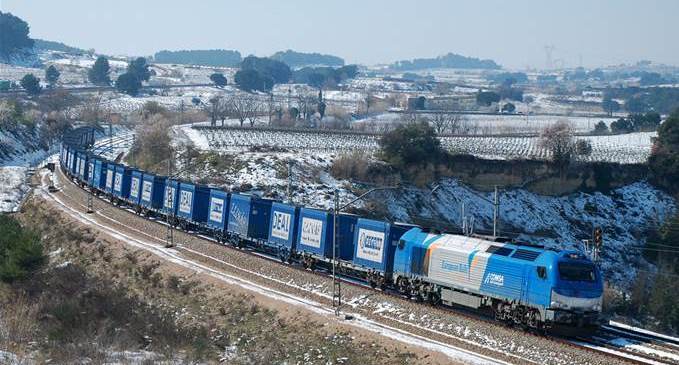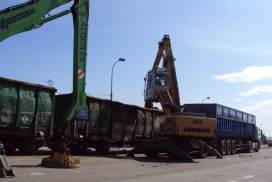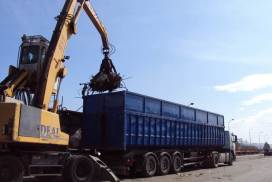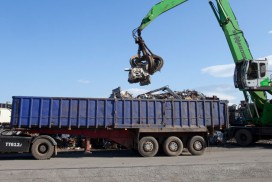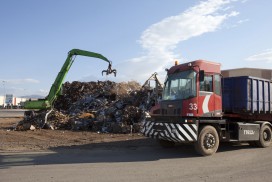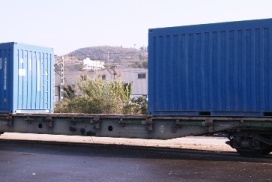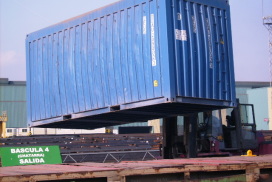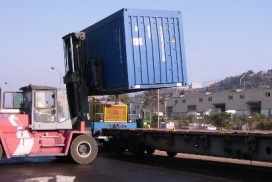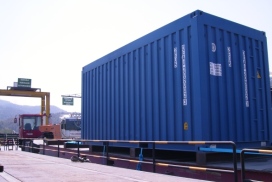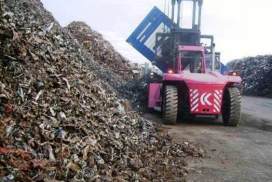Transport and unloading of containers of shredded scrap by direct tipping
OBJECTIVES
- To reduce the cost of transport and unloading of scrap received by train
- To increase the productivity of scrap unloading and sorting operations
- To reduce train-at-factory time. To reduce track occupancy
- To avoid unloading scrap at night due to the proximity of an urban centre
WHAT WAS THE OPERATION LIKE BEFORE THE IMPROVEMENT?
- At source, at the scrap-shredding facility, scrap had to be loaded on trucks and transported to the track stacking area, where it was unloaded again. When the train arrived, the scrap had to be reloaded onto the corresponding wagon
- When the train arrived at the factory, it was unloaded by rotating crane onto a 25-t truck, which transported it to the corresponding area. To do this, the operation required 1 rotating crane and 4 trucks making round trips. The total time for the operation was 8 to 10 hours
- The train had to be unloaded during the morning shift to reduce inconvenience to nearby residents
- In addition, it required the physical presence of a scrap-sorter and a rotating crane in the area throughout the unloading process to receive and stack the scrap received
- High occupancy of the scales by the trucks doing the necessary round trips
WHAT IS THE OPERATION LIKE NOW?
Special 20-foot containers have been designed and manufactured for scrap, reinforced and adapted for handling and transport by rail, certified in conjunction with the railway operator.
- At source, the scrap containers are transported to the shredder with platforms, where they are loaded directly during off-peak periods with the same rotation as that assigned to the shredding process
- Once the containers are full, they are transported again by platform to the track area, where they are loaded directly using a front loader
- The scrap train is received at midnight and a front loader unloads the containers directly onto transport platforms
- As the front loader unloads the containers of scrap, it reloads the train with empty containers
- The train unloading process takes no more than 2 hours. The train leaves the factory and the railroad sidings are left unoccupied and ready for a new train
- A worker with a terminal tractor transports the platforms to the scrap yard and parks them in front of the corresponding stack
- The next morning a front loader with a tipper empties all the containers in the presence of a sorter and a rotating crane
- Once all the containers have been unloaded, they are transported back to the siding
RESULTS
- Unloading time reduced by 75%
- Faster tipping and sorting of scrap in flexible times
- Reduced scrap unloading and sorting costs
- The scrap can be unloaded on the night shift without causing inconvenience to local residents
- Increased work capacity of the railway siding
- Improved efficiency of operations at the source of the scrap

